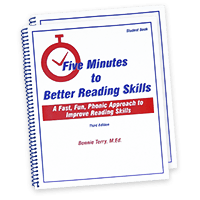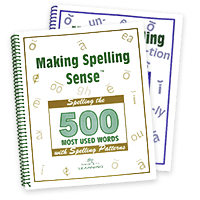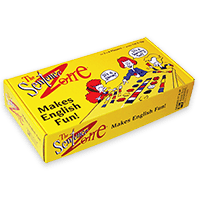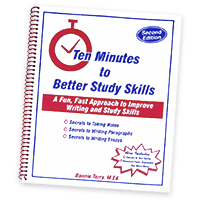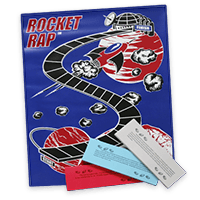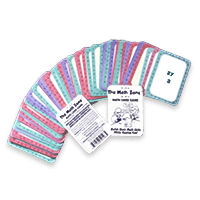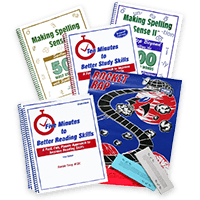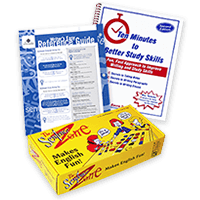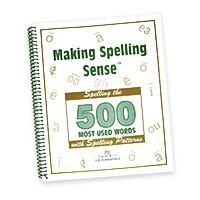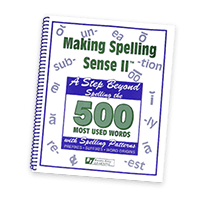Strategies to Improve Reading Comprehension
October 29th, 2018[vc_row][vc_column][vc_column_text]Reading comprehension is the ability to understand, analyze, synthesize, and use what you have read. Without comprehension, there is really no point to reading.
Years ago I had a student that when she read aloud she sounded quite good. In fact, she sounded so good, I didn’t understand why I was seeing her. Then, I asked her questions about what she had read. She was unable to answer all but one of the questions. She is what we call a word caller rather than a reader. A reader understands what they have read. A reader comprehends what they read.
So, I had my work cut out for me. I had to teach my student how to comprehend what she read. Research shows that using graphic organizers to manipulate what you have read makes a huge difference.
Graphic organizers allow you to easily take notes and turn what you read into a graphical display or story structure. It is much easier to summarize, answer questions, and generate questions with graphic organizers. These are all critical pieces of comprehension.
6 Key Strategies to Improve Comprehension
- Monitoring comprehension
- Using graphic and semantic organizers
- Answering questions
- Generating questions
- Recognizing story structure (and other text structures)
- Summarizing
[/vc_column_text][video_item youtube_video=”true” aspect_ratio=”aspect_16_9″ title=”How to Improve Comprehension Skills” author=”Bonnie Terry” publisher=”Bonnie Terry Learning” link=”https://www.youtube.com/embed/__d3LfmQ8j0″ video_unique_id=”how_to_improve_comprehension”][vc_column_text]
5 Activities to Improve Reading Comprehension
1. Look for the 5 W’s (and How) when you read.
- Who – The nouns or subjects: people and things.
- What – The verbs or actions taking place.
- Where – Places that the events are taking place.
- When – Past, present, or future.
- Why – What caused the events to occur.
- How – In what way did the events occur?
2. Look for descriptors when you read.
These are the adjectives and adverbs. They help describe subjects and actions in what you read. They help you paint a mental image as you read. These could be colors, numbers, shapes, sizes, and directions.
3. Visualize what you read.
Books always seem to be better than movies, don’t they? The pictures that we are able to imagine in our mind as we read the author’s words can be so much more vivid and vibrant. The author lets the reader be the director of the story by filling in the missing details. By imagining an actual picture of what you read as you read it, helps tie your visual memory to your comprehension skills. When you try to remember a part of the story, you can go back to the picture in your mind that you created.
4. Take notes with a graphic organizer and draw pictures as you read.
Graphic organizers can help you better organize your notes and thoughts about what you read by putting information into an easy to follow structure. We use our Ten Minutes to Better Writing and Study Skills. These graphic organizers can help you take notes on simple stories, paragraphs, textbooks, entire books, and more. By putting information down in a graphic structure, you can clearly organize the information and get a better level of understanding of the material.
Don’t forget to draw pictures as you take your notes. Research has shown that physically drawing can help you remember the material more than just writing words down (Jeffrey D. Wammes, Melissa E. Meade, and Myra A. Fernandes).
5. Ask yourself questions as you read.
It is tremendously helpful to ask yourself questions as you read. This helps build and retain your comprehension by using active recall rather than just passively reading the text.
- Did I make any predictions while I was reading?
- Who was the main character?
- What was the problem he/she encountered?
- How was the problem resolved?
- What might happen next?
- What else would I like to know?
- What would I change about the story?
- If I changed the setting of the story, would everything stay the same, or would there be a different ending? What would the ending be?
- What background knowledge helped me understand the selection?
- What did you like or not like about the story? Try to find an emotional response to what you have read. When you have an emotion tied to what you’ve read, you are more likely to remember it, even if you didn’t like it!
[/vc_column_text][vc_column_text]For more direct instruction on improving reading skills by improving comprehension, check out our Awaken the Scholar Within Reading, Writing, and Study Skills Program. Here, Bonnie teaches these skills to you, step-by-step through audio and video lessons. The program includes Five Minutes to Better Reading Skills, Ten Minutes to Better Writing and Study Skills, The Sentence Zone, and the Writer’s Easy Reference Guide which integrates vocabulary with comprehension and writing skills.[/vc_column_text][/vc_column][/vc_row][vc_row][vc_column width=”1/4″][vc_single_image image=”8183″ img_size=”full”][/vc_column][vc_column width=”3/4″][vc_column_text]
Are you interested in learning more about solutions to reading, writing, math, or spelling problems? What about solutions that also improve your auditory, visual, and tactile-kinesthetic systems? Contact us at info@bonnieterrylearning.com
[/vc_column_text][/vc_column][/vc_row]












